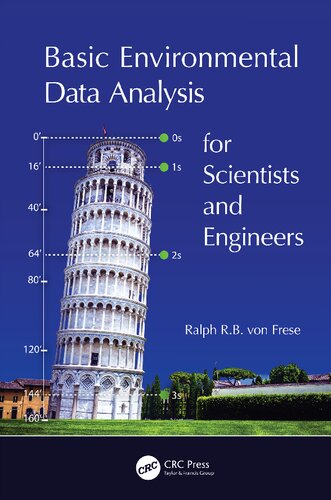

Most ebook files are in PDF format, so you can easily read them using various software such as Foxit Reader or directly on the Google Chrome browser.
Some ebook files are released by publishers in other formats such as .awz, .mobi, .epub, .fb2, etc. You may need to install specific software to read these formats on mobile/PC, such as Calibre.
Please read the tutorial at this link: https://ebookbell.com/faq
We offer FREE conversion to the popular formats you request; however, this may take some time. Therefore, right after payment, please email us, and we will try to provide the service as quickly as possible.
For some exceptional file formats or broken links (if any), please refrain from opening any disputes. Instead, email us first, and we will try to assist within a maximum of 6 hours.
EbookBell Team

4.7
46 reviewsClassroom tested and the result of over 30 years of teaching and research, this textbook is an invaluable tool for undergraduate and graduate data analysis courses in environmental sciences and engineering. It is also a useful reference on modern digital data analysis for the extensive and growing community of Earth scientists and engineers.
Basic Environmental Data Analysis for Scientists and Engineers
introduces practical concepts of modern digital data analysis and graphics, including numerical/graphical calculus, measurement units and dimensional analysis, error propagation and statistics, and least squares data modeling. It emphasizes array-based or matrix inversion and spectral analysis using the fast Fourier transform (FFT) that dominates modern data analysis. Divided into two parts, this comprehensive hands-on textbook is excellent for exploring data analysis principles and practice using MATLAB®, Mathematica, Mathcad, and other modern equation solving software.
Part I, for beginning undergraduate students, introduces the basic approaches for quantifying data variations in terms of environmental parameters. These approaches emphasize uses of the data array or matrix, which is the fundamental data and mathematical processing format of modern electronic computing. Part II, for advanced undergraduate and beginning graduate students, extends the inverse problem to least squares solutions involving more than two unknowns.
Features: